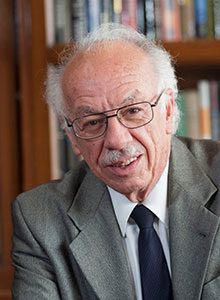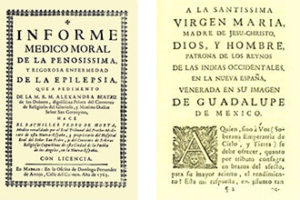From the early 1500 to present day, striking developments in Mexico’s neurology
By Eduardo SAN-ESTEBAN, MD

Eduardo San-Esteban, MD
Mexican neurology, considered as the dedication of our country to the study of nervous system function and disorders, and as the specific attention to persons with neurological clinical symptomatology, can be traced even before the Spaniards’ conquest at the beginning of the 16th century.
The Aztecs as well as the Mayans had a clear concept of the disease, well in accordance with their particular cosmogony and ideas about the underworld. They used specific words for the different types of disorders and a clear pharmacopea based on herbs and animal products.
There is a large “códice,” the “Badiano códice,” that contains all sort of medical herb treatments for different ailments, including, of course, neurological disease.
Shortly after Mexico City surrendered in 1521, the first hospital in the continent was founded by Cortez himself in 1524. This hospital is still giving medical attention. The University of Mexico was founded in 1551, the same year as the University of Peru. In 1567, the first hospital in the continent dedicated to the care of the demented, handicapped, and epileptics was established in Mexico City by Fray Bernardino Alvarez. The religious order created by Alvarez built 12 more hospitals over the next century. Some of them were created just for epileptic and demented women, much as the Salpetriere in Paris.
Publications

(left) First book on epilepsy on the continent. 1763 Puebla, Mexico. (right) Same book, written by Pedro de Horta.
The first printing office in the new world was established in 1539, and in 1579, the first neuroanatomy text printed in America was published by Fray Agustin Farfan, very much in line with the Galenic and Vesalio anatomy.
In 1761, Pedro de Horta, a physician in the city of Puebla, 100 miles east of Mexico City, published the first complete report in the continent, dedicated to the epilepsies, as he studied a group of nuns. It is an extraordinary book containing the beliefs and knowledge of the topic at the middle of the 16th century.
During the 1800s, Mexican medicine became close to the European model, in particular with the French. Medical schools developed around the country and neurology was practiced within the frame of internal medicine. Most of the technical advances produced in Europe were available in Mexico shortly after. The country was occupied by the French army for several years and had an Austrian emperor around the same time.
Many physicians studied abroad, and later some of them attended the Charcot service in Paris. By the end of the century, brain surgery was performed for the treatment of tumors and Jacksonian epilepsies, and many papers were published on matters such as vascular disease, neuropathy, epilepsy, headaches, cognitive impairment and, of course, neurosyphilis, a common and severe disease.
The 20th century started late for Mexico as the country was involved in a Social Revolution. Even so, after the first decades, there was an explosive development of medical services and facilities.
As neurological knowledge goes, Mexico had a large contribution from the Spanish scientists who emigrated during and after the civil war in Spain. Several direct pupils of Ramon y Cajal and Pio del Rio Hortega established themselves in Mexico, founded institutions, and developed those that were already existing. The influence of the neurohistologists remains to this day.
During the 1960s, a group of Mexican neurologists arrived in the country after completing their education in different services, including Cleveland, London, Marseilles, Minneapolis, Montreal, New York, and San Francisco. They all founded neurology services. In 1964, the National Institute of Neurology and Neurosurgery was founded.
During the following decade, this group organized neurological services in child neurology as well as adult, developed the Mexican Board, founded the Mexican Academy of Neurology, and created the Mexican Chapter of the International League Against Epilepsy.
Several of the newly created services became centers of neurological education. As for today, we graduate some 65 neurologists every year. We have continuous education programs and host international meetings.
No doubt there is a lot to be done to provide neurological services to the whole of our population. We have a good history behind us and a large generation of young neurologists that will continue the job.
Eduardo San-Esteban, MD, is with the Mexican Academy of Neurology at the Neurological Center of the American British Cowdray Medical Center In Mexico City, Mexico.
